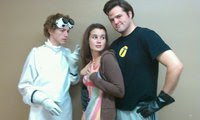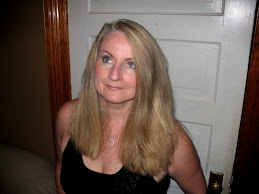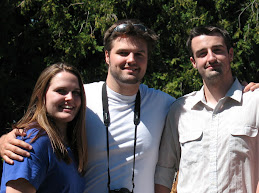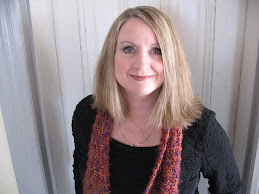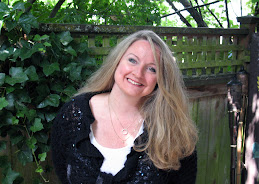I don't know what I expected but I definitely got more than my money's worth, plus Margot Finke donated this critique to help a fellow writer. So, besides being a wonderful editor, Margot Finke is an amazing person!
If you're thinking of having some of your work professionally critiqued, take a peek at Margot's prices and consider giving her your business. We writers need to stick together on this path through the wonderful world of publishing.
And Margot is so generous she's offered to give FREE AUDIOS of her reading a story from her "Wild and Wonderful" rhyming series, to 2 people who comment or ask questions, after reading my blog interview.
So, leave a comment, you'll be put in a pot, which Margot will pick from to award a prize. So, take a minute and click on the "comment" section and leave a thought or two. You don't have anything to lose and two of you could end up winners.
Now, here's my interview with Margot:

1) How did you get into the critique business?
My Manuscript Critique career began slowly, as a way of helping new writers up the publication ladder. When I joined the original Children's Writers List ("CW") list (before all the offshoots came along) there were only a few of us. Luckily for me, several wonderful writers mentored my stumbling steps at writing, and set me straight in a firm bur gentle way. Later, after some success myself, I helped others, and did many free critiques for newcomers. One sharp and talented lady read a critique of mine, and then she e-mailed me. "Margot, I get paid to critique manuscripts. The time and expertise you put into these freebies is obvious. You need to get paid for your work."
That was the beginning of my Manuscript Business. However, it takes more than an ability to pinpoint what will HOOK readers, show how to tighten paragraphs, and offer suggestions about voice, character development, and plot structure. These manuscripts are a writer's babies: and no parent trusts a stranger with their child - right. It took time for writers on a variety of lists to get to know and trust me. Word of mouth might be slow, but it sticks! My well known website and two blogs also offered writing help and advice, along with promoting my own books and those of others. Having my "Musings" column regularly featured in the Purple Crayon was another plus. Slowly but surely, I built a reputation for critiques that were fair, honest, and sprinkled with suggestions, comments and examples that proved enlightening and helpful.
I invented sayings that hopefully dull the pain that negative comments inflict.
Here are some of them:
* You need to make your writing as tight as Aunt Fanny's new girdle.
* Use powerful and active words that paint an instant picture in young reader's heads
* Think of this chapter as an overgrown garden that needs to be weeded and pruned.
* Waffles are for breakfast - not for writing.
* Think kid.
* A wonderful picture book is like a successful marriage between the writer and the illustrator: you drop word clues for the illustrator to pick up on, and he fills in the details.
* You are fishing for an editor, so make sure your HOOK has the kind of bait that lands an editor. Hook 'em early!
One time I was critiquing an MG manuscript, and the writer seemed determined to keep several different POV characters popping in and out of the same chapter. We had become friendly, so I e-mailed her, saying she was giving me gray hairs. She e-mailed me immediately, saying, " So sorry, Margot. Have Fed-Exed you a large jar of red hair dye. Will rethink MS problem so your hair stays red!"
Keeping a good relationship with clients is vital. Yet offering an honest evaluation they can understand and use is equally important. I always tell clients to use my comments and suggestions as a guide to reworking their story with tighter writing, stronger characters, and a pace that sizzles.
Yet I am always waiting for that one person who gets mad at me for my comments and opinions, and thinks my suggestions are !@#$. So far it hasn't happened, but there's always tomorrow. . .
Check out my Manuscript Critique Service here:
http://mysite.verizon.net/mfinke/Manuscript%20Critique.htm#crits
2) How many manuscripts do you edit per month and/or year?
Lordy mate, that is a tricky one. I have a huge file of completed critiques, but I have never counted them - monthly or yearly totals. Sometimes I receive requests for several large manuscripts a week. An in-depth critique takes a lot of time and concentration, and the time it takes depends on the skill level of the writer. At other times it will be all picture books for a week or so - maybe six or seven at a time. Then things taper off, and I have nothing on my crit plate for a few weeks. It is often feast or famine. Either I am working flat out, juggling clients needs, with no time to write anything of my own, or my plate is empty.
With MG or YA manuscripts, I usually work on two or three chapters at a time, returning them in stages to the author.
3) How many books do you have published and have you ever used a professional critique for your own work?
Years ago I paid for a professional critique on one of my books. It taught me a good lesson. This person said my writing and plot was great, but I discovered later ( after numerous rejections) that she was not involved with children's books - only adult writing. I should have researched better, and found a professional steeped in the business of writing for children.
I now have 8 books published, with two more coming out soon.

All reluctant reader friendly! "Wild and Wonderful" is a 7 book rhyming series of facts about animals from the US and Australia. Fun and educational, it's for teachers in classrooms, and home schooling parents. Available from my website as autographed CDs, or e-Books from Reader's Eden, Fictionwise, and many more.

"Rattlesnake Jam" is my latest - a fun fest for boys. The cartoon style illustrations, by award winner Kevin Scott Collier, make Gran, Pa and the rattlers jump off the page. You can even go to "Gran's Kitchen" on my website, for genuine rattlesnake recipes - no barfing allowed!

The other two are "Ruthie and the Hippo's Fat Behind" - illustrated by K.C. Snider (that pink hippo steals the story!), and "Horatio Humble Beats the Big D," illustrator Ellen Gurak. Teacher guides and coloring sheets come with both books. All three published by Guardian Angel Publishing (G.A.P.) and available in soft cover or e-book versions from my website, Amazon, B&N, Target, Fictionwise and more.
** Any book bought from my website comes with a FREE AUDIO link to me reading that book + the illustrations. Links to all books mentioned are on my Website Directory:
http://www.margotfinke.com
4) What is your favorite aspect of being involved in manuscript critiques?
I love helping writers "get" it. So many of them come to children's writing without a clue about what is involved. When I look at a rewrite that is way tighter, stronger, and focused on what will hook readers, I feel a real thrill. I helped point the way to publication. Some writers have good instincts right form the first paragraph they write. The buzz I get from helping them tighten and polish their chapters is huge.
5) What is the most common problem you see with manuscripts?
That's easy, mate.
Picture Books
* Too wordy. Aunt Fanny's girdle always needs an extra cinch!
* Using 10 words when 5 do nicely.
* Repeating the same sentiment, just varying the words.
* Tired and overworked verbs and adjectives - Use Word Thesaurus ( Shift F7 ) to find
powerful and active verbs & evocative adjectives.
* Getting to the point - short attention span of young kids.
MG or YA
* HOOK the reader early
* Tighten the writing
* Focus on what is vital to the plot
* Good character development.
* Weak Verbs
6) What would be the one universal tip you would give to new writers?
Read, read, read, books in the age and genre you want to write. This will help you absorb a feel for sentence structure + plot and character development. Taking a writing class is also a great idea, especially if it's been a few decades since you were in English Class.
Thank you so much for hosting me, Kim.
Thanks for your time, Margot.

























